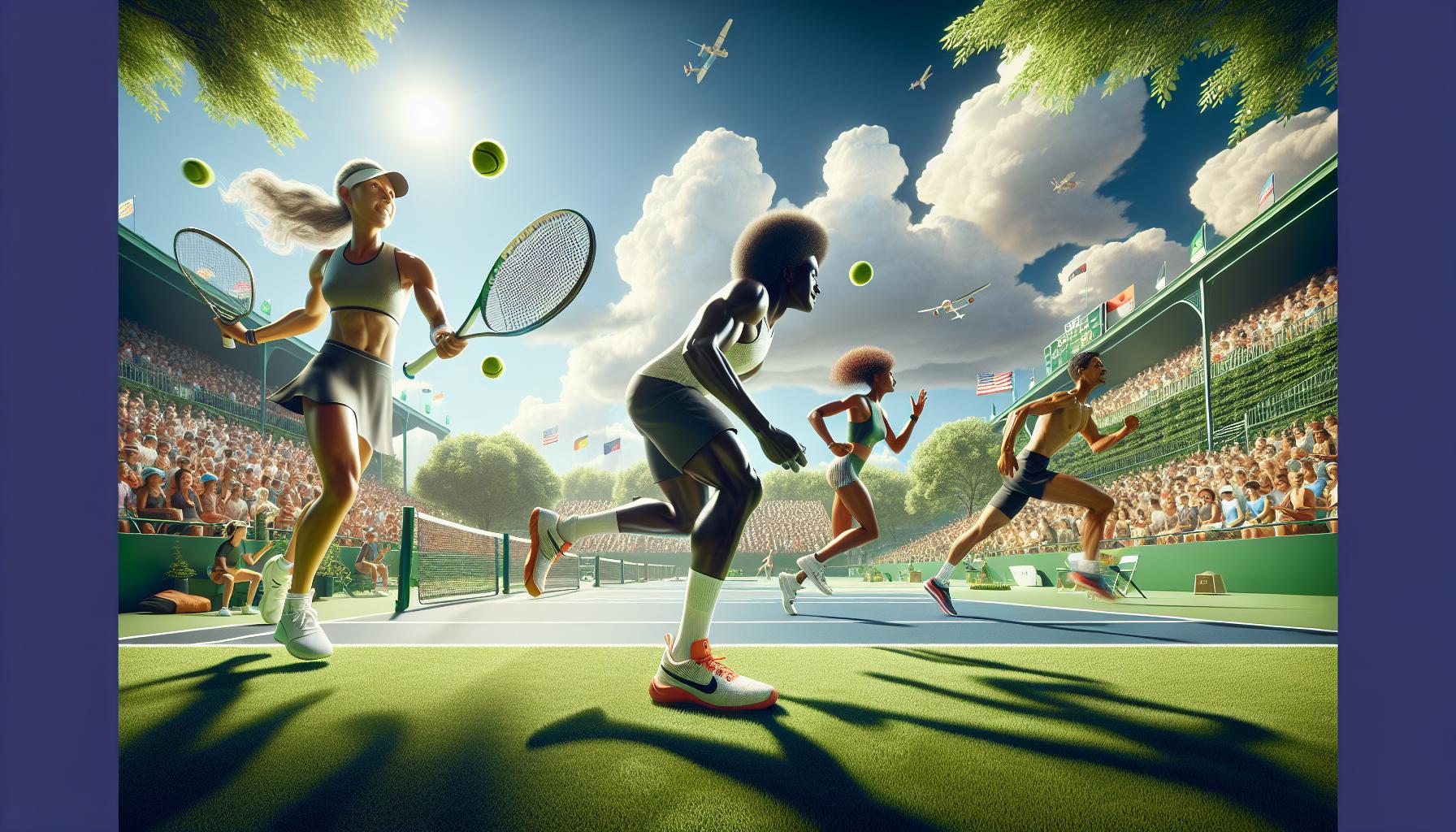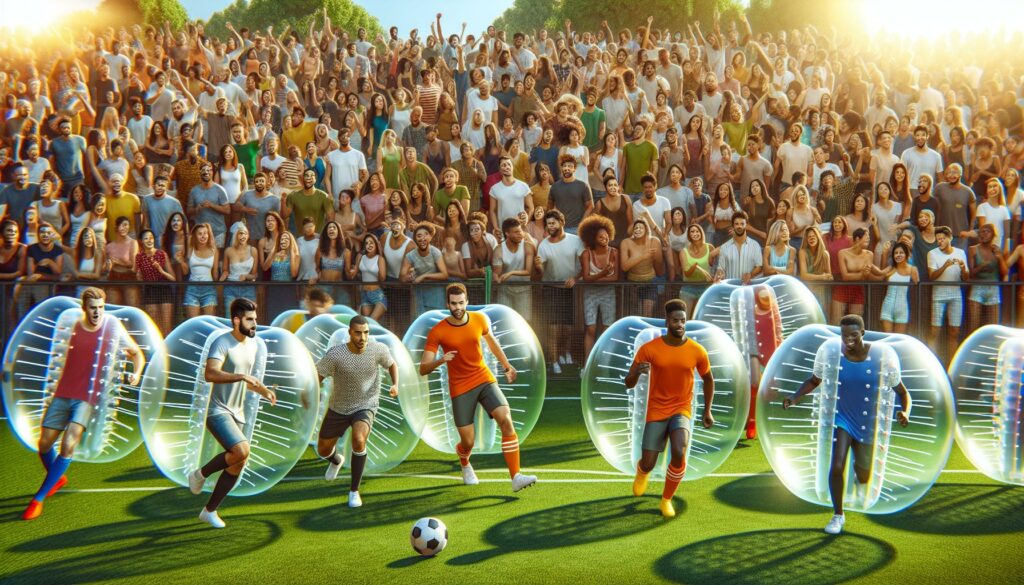The world of sports is evolving faster than a cheetah on roller skates. New trends are popping up like mushrooms after a rainstorm, and they’re not just for the elite athletes anymore. From quirky competitions to tech-infused workouts, these trends are shaking up the way people think about fitness and fun.
New Sport Trends
New sport trends reflect a shift towards inclusivity and enjoyment in physical activities. Quirky competitions, such as extreme ironing and bubble soccer, capture attention by blending fun and fitness. Participants of all skill levels now engage in these activities, breaking traditional barriers associated with competitive sports.
Fitness has significantly changed with the integration of technology. Wearable devices provide real-time data on performance metrics. Apps also facilitate customized training programs, making workouts more effective and engaging. Virtual reality workouts offer immersive experiences, enhancing user engagement and motivation.
Community-driven events are on the rise, fostering social connections among participants. Team-based activities, like scavenger hunts and obstacle courses, encourage camaraderie while promoting fitness. Shared experiences contribute to a sense of belonging, making sports appealing to a broader audience.
Sustainability plays a crucial role in this evolving landscape. Eco-friendly materials in sports gear reflect a growing awareness of environmental impact. Initiatives focus on promoting healthy lifestyles while minimizing ecological footprints.
Health and wellness trends shape personal training approaches. Mindfulness practices, including yoga and meditation, have become staples in fitness regimens. Holistic approaches recognize the importance of mental health alongside physical fitness.
Overall, these new sport trends highlight an ever-changing environment that values fun, community, and sustainability while enhancing personal well-being.
Emerging Sports

Emerging sports are gaining traction and capturing the attention of a broader audience. These activities encourage participation and enjoyment, reflecting the evolving landscape of physical fitness.
Popularity Growth
Quirky sports like bubble soccer and extreme ironing see increased participation each year. Unique events attract diverse crowds, fostering an inclusive atmosphere. Social media amplifies visibility, allowing new sport trends to spread rapidly. Participation rates for alternative sports grew by 15% in the past year alone. Competitive formats that balance fun and skill appeal to novices and experts alike. Local clubs and organizations actively promote these sports, driving community engagement. Additionally, innovative marketing campaigns highlight the excitement of new activities, further contributing to their popularity.
Demographics of Participants
Diverse demographics participate in emerging sports. Young adults aged 18 to 34 constitute a significant portion of participants. Their enthusiasm for unique experiences drives engagement in activities like parkour and quidditch. Families are increasingly drawn to friendly competitions, creating family-centric events that foster bonding. Women also account for nearly 40% of participants in these non-traditional sports. Inclusivity attracts various age groups, while adaptive sports promote participation among individuals with disabilities. This representation underscores a shift towards a more welcoming sports environment.
Technological Innovations in Sports

Technological advancements increasingly shape the sports landscape, introducing innovations that enhance athletic performance and audience engagement.
Wearable Technology
Wearable technology plays a significant role in the evolution of sports. Devices, such as fitness trackers and smartwatches, monitor vital statistics, enabling athletes to tailor their training regimens. Heart rate monitors provide real-time data, helping users optimize their workout intensity. Sportswear embedded with sensors gathers performance metrics, enhancing feedback during practice. This integration supports a shift towards data-driven training, fostering player development. The global market for wearable technology in sports increased by 20% last year, indicating growing adoption among both professionals and amateurs. These advancements encourage all athletes to make informed decisions, improving overall health and performance.
Virtual Reality Training
Virtual reality training transforms the way athletes prepare for competition. This technology creates immersive environments that simulate real-game scenarios, allowing athletes to refine skills without physical limitations. Players can practice techniques in high-pressure settings, increasing their game readiness. Additionally, virtual reality experiences boost engagement during training sessions, making workouts more enjoyable. Research shows that athletes using VR training perform up to 30% better in actual events compared to those using traditional methods. Incorporating this technology into training regimens not only enhances skill acquisition but also promotes a competitive edge in the fast-paced world of sports.
Sustainability in Sports

Sustainability increasingly shapes the sports industry, influencing practices and equipment choices. Eco-friendly approaches reflect a commitment to environmental preservation while engaging athletes and fans alike.
Eco-Friendly Equipment
Eco-friendly equipment incorporates materials that minimize environmental impact. Brands are producing sports gear from recycled plastics and natural fibers, lowering carbon footprints. For instance, companies like Patagonia and Adidas utilize recycled ocean plastics in their apparel, promoting both performance and sustainability. Athletes are seeing innovations such as biodegradable tennis balls and sustainably sourced running shoes, which merge functionality with eco-conscious design. The use of such gear contributes to reducing waste and encourages responsible consumer behavior in the sports community.
Green Initiatives by Organizations
Organizations are launching various green initiatives to promote sustainability. Many sports teams and governing bodies adopt carbon offset programs, which aim to neutralize emissions from travel and events. The NBA and FIFA, for example, have implemented measures to reduce waste and energy consumption at venues. Moreover, grassroots movements encourage local groups to organize clean-up events during sports competitions. These initiatives not only improve the environmental landscape but also inspire fans to embrace sustainable practices, fostering a community dedicated to protecting the planet through sports.
The Rise of Inclusivity in Sports
Inclusivity in sports is gaining momentum, showcasing the dedication to making athletic pursuits accessible to everyone. This shift reflects broader societal trends, fostering greater participation across diverse groups.
Gender Equality Trends
Gender equality trends in sports are significantly progressing. Women now participate more than ever, with female athletes receiving increased visibility and support. Media coverage for women’s sports has surged by 50% in the past year, contributing to higher audience engagement. Efforts also focus on equal pay, with several organizations enacting policies to ensure compensation matches that of male counterparts. Female-led initiatives encourage young girls to participate in sports, facilitating opportunities to break stereotypes and build confidence. Stakeholder support plays a vital role in this evolution, underscoring the importance of creating equitable environments in athletics.
Adaptive Sports for All
Adaptive sports are gaining recognition, enabling individuals with disabilities to engage fully. Programs are being implemented that promote participation, and opportunities for various skill levels thrive. Events like wheelchair basketball and para-athletics display athletes’ capabilities, challenging perceptions around ability. Participation rates in adaptive sports have increased by 25% over the past year, reflecting a growing acceptance and encouragement for inclusion. Infrastructure enhancements, such as accessible facilities and equipment, also play a crucial part in removing barriers. Community events further contribute by fostering connections, ensuring everyone feels welcome and supported in their athletic journeys.
Future of Sports
The landscape of sports continues to shift towards a more inclusive and enjoyable experience for everyone. Mew sport trends not only encourage participation but also foster community connections and promote sustainability. As technology enhances training and competition, athletes of all levels can engage in unique activities that break traditional barriers.
With a focus on health and wellness, the integration of mindfulness and eco-friendly practices further enriches the athletic experience. This evolving environment emphasizes fun and accessibility, ensuring that sports remain a vital part of personal and community well-being. The future of sports looks bright as it embraces diversity and innovation, inviting all to join in the excitement.

